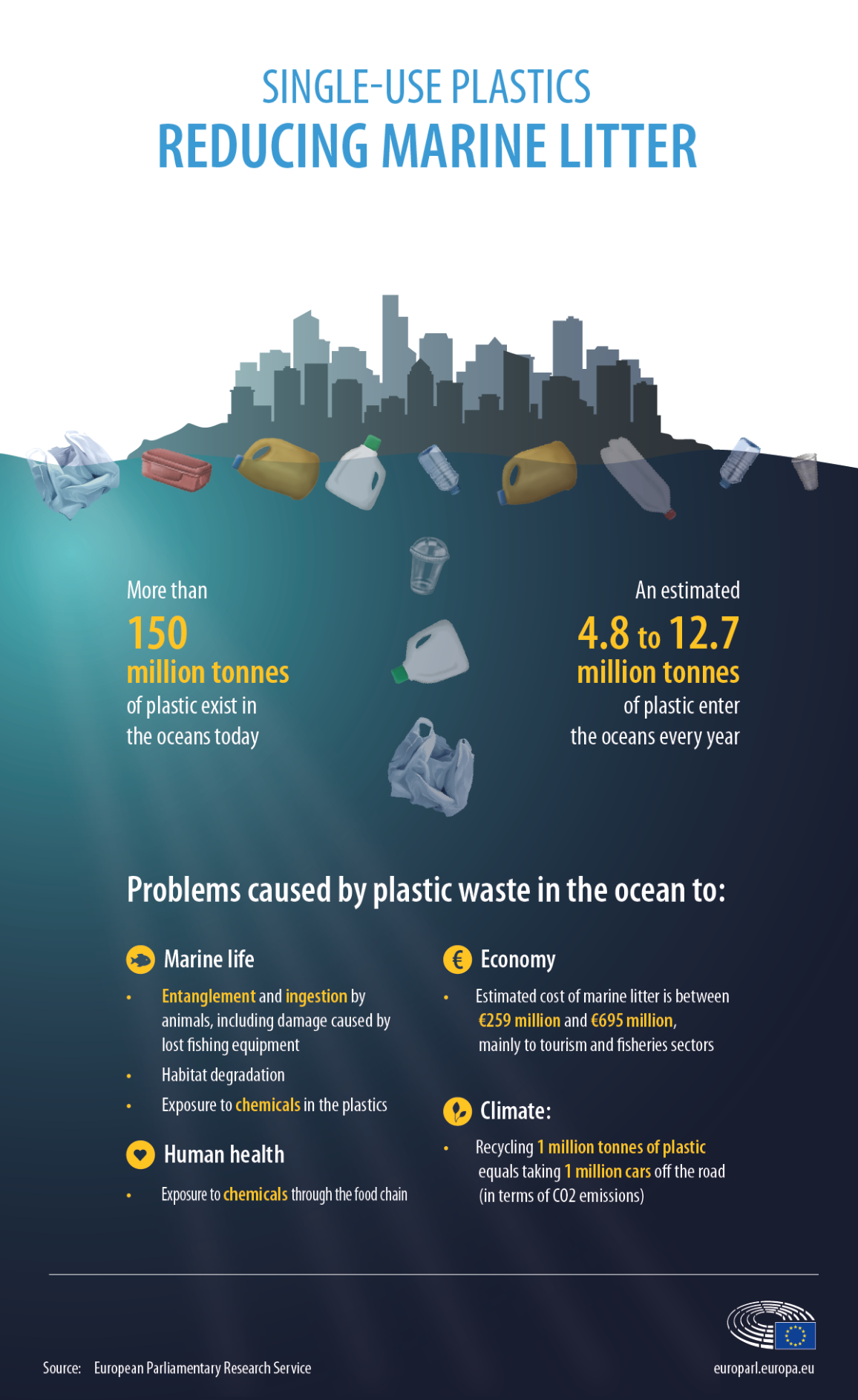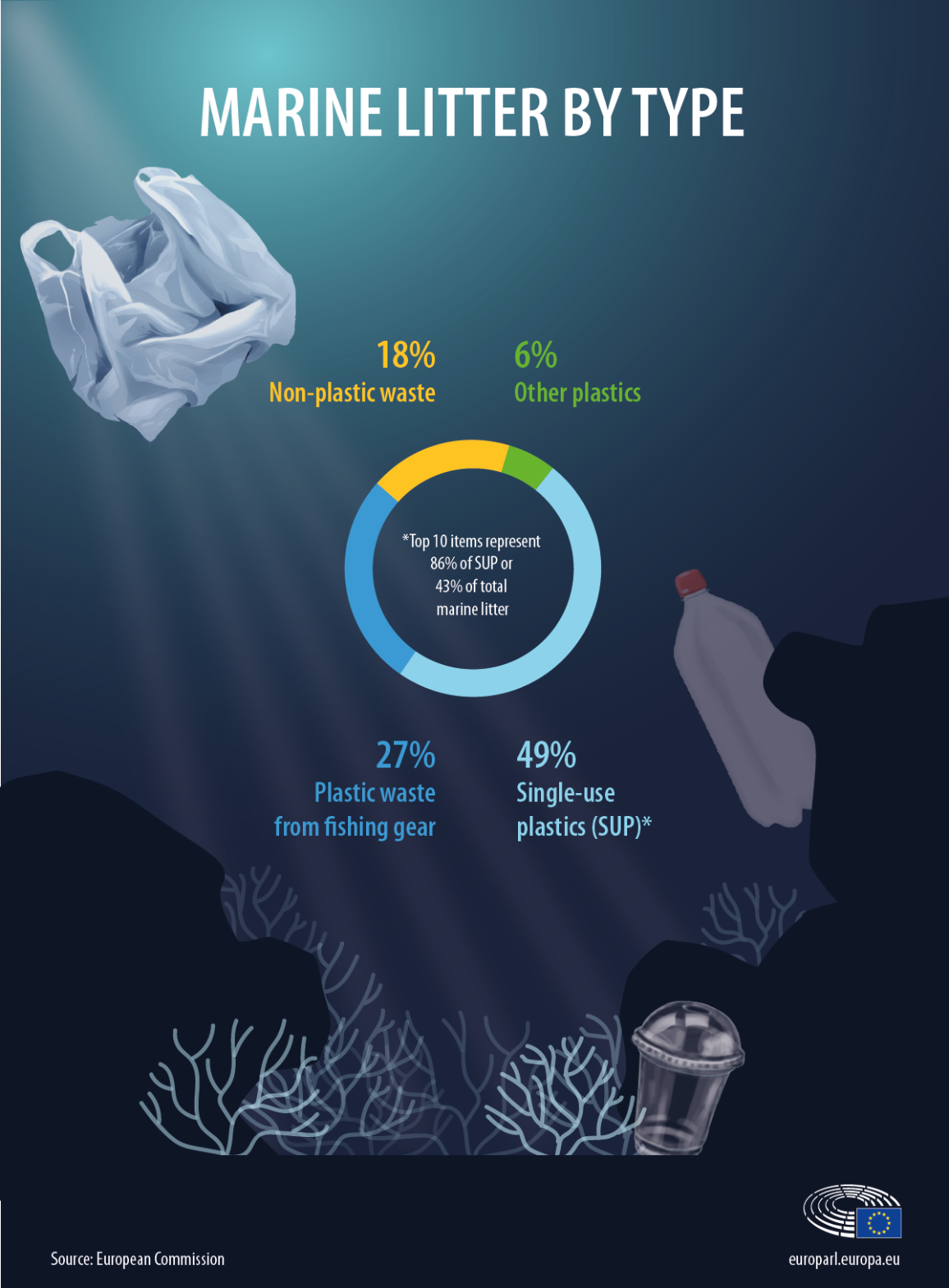Find out key facts about plastic in the ocean with our infographics, as well discover their impact and how the EU is acting to reduce plastic litter in the seas.
The results of today’s single-use,
throw-away plastic culture can be seen on sea shores and in oceans
everywhere. Plastic waste is increasingly polluting the oceans and
according to one estimation, by 2050 the oceans could contain more
plastic than fish by weight.
New EU rules, adopted by MEPs on 27 March
2019, tackle lost fishing gear and the 10 single-use plastic products
most widely found on European shores. Together these two groups account
for 70% of marine litter. These new rules were also approved by the Council in May 2019.

Problem
Plastic
doesn’t just make a mess on the shores, it also hurts marine animals
who get entangled in larger pieces and mistake smaller pieces for food.
Ingestion of plastic particles can prevent them from digesting normal
food and might attract toxic chemical pollutants to their organisms.
Humans eat plastic through the food chain. How this affects their health is unknown.
Sea
litter causes economic losses for sectors and communities dependent on
the sea but also for manufacturers: only about 5% of the value of
plastic packaging stays in the economy – the rest is literally dumped,
showing the need for a approach focussed more on recycling and reusing
materials.

What needs to be done?
The most effective way to tackle the problem is to prevent more plastic getting in the ocean.
Single-use
plastic items are the biggest single group of waste found on sea
shores: products such as plastic cutlery, drink bottles, cigarette butts
or cotton buds make up almost half of all sea litter.

The new measures
A
total ban is proposed for single-use plastic items for which
alternatives in other materials are already readily available: cotton
buds, cutlery, plates, straws, drink stirrers and balloon sticks. MEPs
also added oxo-degradable ( Oxo biodegradable materials degrade by oxidation, being stimulated by the chemical additives) plastic products and fast food containers made
out of polystyrene to the list .
For the rest, a range of other measures was approved:
- Extended producer responsibility, especially for tobacco companies, in order to strengthen the application of the polluter pays principle. This new regime will also apply to fishing gear, to ensure that manufacturers, and not fishermen, bear the costs of collecting nets lost at sea.
- Collection target of 90% by 2029 for drink bottles (for example through deposit refund systems)
- A 25% target for recycled content in plastic bottles by 2025 and 30% by 2030
- Labelling requirements for tobacco products with filters, plastic cups, sanitary towels and wet wipes to alert users to their correct disposal
- Awareness-raising
For fishing gear, which accounts for 27% of sea litter, producers
would need to cover the costs of waste management from port reception
facilities. EU countries should also collect at least 50% of lost
fishing gear per year and recycle 15% of it by 2025.
This looks very promising from the European side of things, I will be looking into what the rest of the world are doing to tackle the problem.
The blog song for today is: "Love me tender" by Elvis Presley
TTFN



No comments:
Post a Comment